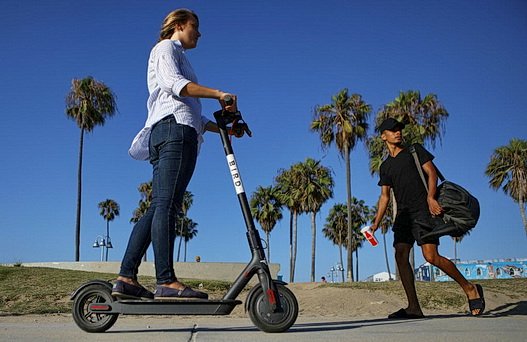Inter-ministerial plan aims to put more Israelis on bikes

The Ministry of Construction and Housing, the National Economic Council, the Planning Administration, the Ministry of Transport, and Israel Land Authority unveiled the "National Strategic Plan for Sustainable Urban Traffic" today. This visionary plan assumes people depend on cars because they are unable to travel short distances by other means - by walking or riding bicycles. The document, prepared by a team of experts coordinated by Dr. Nir Sharav, analyzes the existing situation, examines what is happening elsewhere in the world, and makes practical proposals for improving the urban environment.
The 2018 social survey by the Central Bureau of Statistics shows that 1.4% of people in Israel use bicycles to get to work, and fewer than 7% walk. These figures are far below what is happening in the European Union. Israel has just 370 kilometers of bicycle paths. Even Tel Aviv, which is far more advanced in this respect than other Israeli cities, has only 60 kilometers of bicycle paths. There is no continuous network with good coverage of the important traffic arteries.
The plan's authors believe that there is a close connection between the extent of infrastructure, i.e. the number and quality of bicycle paths, and use of bicycles and how safe their riders feel. A lack of separate infrastructure is responsible for constant friction between pedestrians, bicycle riders, and people traveling in private cars.
The plan assumes that walking and bicycle riding are beneficial: they reduce congestion and save on road costs, save money spent on operating vehicles, save money spent on parking, reduce air pollution, and improve the environment, public health, etc. These benefits can be quantified in money terms: the benefit from walking is NIS 3.23 per kilometer and the benefit from riding a bicycle is NIS 2.55 per kilometer. For the sake of comparison, the benefit of using public transport is NIS 3.14 per kilometer.
The strategic plan lists several practical measures: increasing density by 20% to eight housing units per dunam (32 housing units per acre); building bicycle paths on every street more than 24 meters wide, with a goal of having bicycle paths on one third of all city streets; building a more intensive network of streets in areas of urban renewal and new neighborhoods, with the goal of one fourth of all urban space being allocated to roads and paths; encouraging multi-use and creating new streets with active commercial frontages; giving priority to pedestrians and bicycle riders; reducing the amount of parking required for buildings; and widening sidewalks.
The strategic plan requires government approval and a budget, but for now its importance lies in the realization by all those who participated in preparing it that substantial change is necessary, with coordination between government ministries in promoting high-density and high-quality urban living. The plan's other achievement is putting a price tag on the actions needed to realize it: an annual investment of NIS 1.5 billion. The projected annual benefit is NIS 5 billion.
Related News
